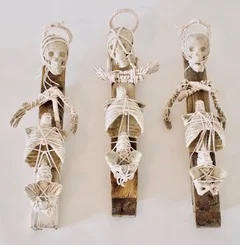Guest blog post by Carol Brown
I would like to share my story of living with osteoporosis, a condition that causes living bones to become brittle, fragile, and more likely to break.
I grew up on a farm, eating organic food, getting plenty of exercise, helping Mom churn butter, make delicious buttermilk, cottage cheese, and crank homemade ice cream.
After college, I moved to a big city, began jogging, worked, married and started a family. My adult life was healthy until I developed Graves Disease, an autoimmune disease that affects the thyroid, a year after my second child was born. Unknown to me at that time, this may have been the beginning of my osteoporosis.
We learn to adjust to medical challenges. My life moved on and I decided to attend art school. When the kids were in college, a divorce became inevitable, which is a story for another time. I was postmenopausal and, after an assessment by my doctor, I learned I had osteoporosis. Denial is a powerful force when we don’t want to face a problem, and I didn’t believe it at first, but the DXA scans proved the diagnosis was real. Suddenly I found myself middle aged, alone and with my health becoming increasingly frail, all the ingredients of a painful and confusing midlife crisis. I retreated from the city back to the country, taking the family dog with me. I became an artist.
As such, it soon became obvious to me that one way to face my osteoporotic condition was to allow it to inspire my work, to create works of art that reflected my condition. As I worked over several seasons, the pieces evolved, resulting in what I call "ossified bones."
My project began in the summer, which is the time of year when my garage becomes a hand-made paper studio. I started by covering small plastic bones with sheets of Abaca fiber, which shrinks to fit the bones as it dries. I began to work with larger plastic bones. The bones looked too realistic, so I melted encaustic, a type of wax, and covered the bones, giving them a different patina.
During the winter, I began putting the bones together to create works of art. The first pieces were attached to linen in a round wooden embroidery hoop and my work continued to undergo its process of metamorphoses. My attitude toward the disease did, as well. Somehow, by embracing its reality through my work, I was able to live in more conscious acceptance of my condition.
"Three Saints"
Hand-made paper, plastic, encaustic, wood, string
Left, 22" x 7’ x 5", Center 23" x 8" x 5", Right, 22" x 6" x 5"
ⓒ 2015-2017, Carol Brown, all rights reserved
"What you are we were, What we are, you shall be"
Hand-made paper, plastic, encaustic, linen, wood, string, thread
14" Diameter
ⓒ 2015-2017, Carol Brown, all rights reserved
"Bones of No Color"
Hand made paper, wood, plastic, encaustic, string, black suede
left, 16 " x 6" x 5", center, 17" x 5" x 5", right, 13" x 7" x 5"
ⓒ 2015 - 2017, Carol Brown, all rights reserved
Finding a weathered wooden planter in my yard, I took it apart, sanded it and used the wood as a background to attach the bones with string. As I was tying string, I began to use different types of knots that transformed in my hands to braided string, as I wrapped it around the bones and wood.
With my 'Ossified" project finally complete, I exhibited it at St. Mary’s Art Center (SMAC) in Virginia City, Nevada. SMAC is an old hospital building, four stories tall, built in the late 1800’s during the silver mining era. At the time, it was considered a state of the art hospital building. Now, like me and the disease I was representing through the artwork I would display there, it had fallen victim to the vagaries of age.
At SMAC, my "Ossified" exhibit was displayed in an intimate space with one window overlooking the old cemetery where workers from the silver mining period are buried. The miners were treated at the hospital, now the art center. I was pleased to see my exhibit come together, joining history, art and health. If those miners at rest in the cemetery could pass judgment, I felt they would have approved of this intimate exploration of the paradox of human life. We are such intriguing creatures, an improbable mix of frailty and transcendent strength both at the same time.
Through my experiences, I believe that life is a process, art is a process, and healing is a process, too. I choose to be fully present in my life, and to make each day count.
View more of Carol’s beautiful work on her website here: www.mokuhanga-studio.com.




